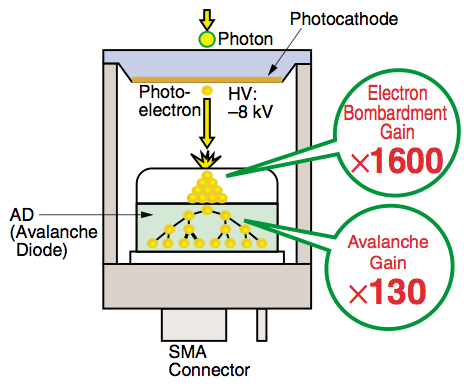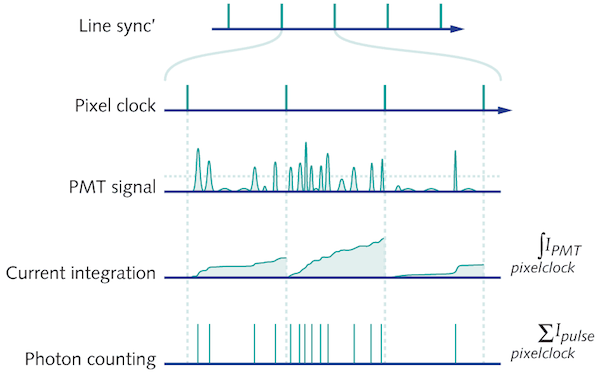Photon counting with Hybrid PMTs
Hybrid PMTs have made their way into fluorescence microscopy and are competing with GaAsP PMTs. (Well, actually, Hamamatsu makes both types, so it’s not really competition in that sense.) These devices have a huge gain at the first stage, which results in lower multiplicative noise. But does it matter? And is it worth the trade off (e.g., some hybrids have smaller detector areas compared to GaAsP PMTs)?
This was the topic of a few recent (and long) posts on the Confocal Listserv. If you’re into this sort of thing, they make a great read.
James Pawley’s post
George McNamara’s post
Wolfgang Staroske’s post
The take-home message is that hybrid PMTs will keep you in a more linear range for bright images.
Some people have noticed higher S:N when they upgraded to hybrid PMTs. But without knowing what their old PMTs were, it’s hard to say that they can offer better images than a top-of-the-line, non-hybrid GaAsP PMT. Your milage may vary and all that. In any case, for dim images, there’s probably not much of an advantage. But for bright images, Hybrid PMTs can offer more quantitative images.
This all is most relevant in photon counting mode. Hybrid PMTs give less variable signals in response to single photons because of the high gain in the first stage.


[…] Let me add some clarification to the hybrid PMT post. […]